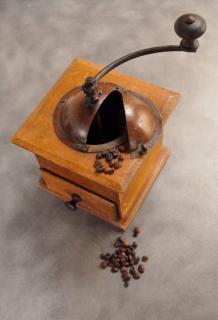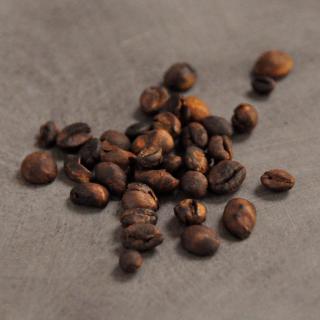

Do you throw coffee grounds away? Not anymore! Coffee grounds have many uses that can boost your garden and flower beds, just like it gives you a boost when you drink the coffee itself!
Composting coffee grounds not only reduces what goes to the landfill, it also benefits your plants. After reading this, will you still throw your coffee grinds away?
Read also:
Used coffee grounds can have many purposes in your garden. On top of recycling your coffee grounds in the garden, you will actually make plants thrive!
Not many of us have a compost pile or find the time to do proper composting. So go ahead and simply put coffee grounds directly into the soil!
It will not add nitrogen to the soil immediately. In the first phase, coffee grounds add organic material to the soil. This enhances drainage, aeration, and water retention.
Moreover, coffee grounds increase growth of microorganisms and earthworms.
In a second phase, nutrients contained in the coffee grounds are released by microorganisms as they break it down. A whole line of microscopic fungus degrades organic material into plant-size bites.
You can also make coffee ground tea which is an excellent additive to make orchid fertilizer.
Add one part ground coffee juice to three parts soft water, use it once a month during the growing phase. Keep in the fridge in a closed jar or bottle.
Spreading layers of coffee grounds as mulch is beneficial when in lower quantity. Coffee grounds shouldn’t exceed more than 25% (one-fourth) of the mulch mix.
Additionally, excess traces of caffeine from the ground coffee might have detrimental effects on some plants. If there are too much coffee grounds in the soil, plants will grow slower or stunted until such a time that soil organisms are able to break the coffee down.
As long as you keep the portion of coffee grounds below one-fourth (25%), you can mix coffee grounds with potting soil mix.
You can use this coffee-enriched soil mix to:
Note that if you add coffee grounds to seeding soil mix, be sure to add a spoonful of grated charcoal, too. Indeed, the high-nitrogen coffee grounds really support growth of fungus. For beneficial fungus, this is excellent, but when starting seeds you’d want to inhibit damping fungus instead.
Since caffeine has a negative effects on pests, it’s possible to use coffee grounds to protect your favorite plants from being eaten.
Typically, sprinkle the dried coffee grounds around areas you want to keep pest-free. Layering it on an ant hill will make the colony move out.
It seems cats do not like coffee grounds. If cats come in your garden to poo, you might want to try spreading some around!
Coffee grounds have naturally high nitrogen content. This is particularly well-suited for grass.
If you are into growing mushrooms, coffee grounds are also used as substrate for these fungus organisms.
The grounds are still full of nutrients which you can use to grow mushrooms, especially oyster mushrooms which love to grow on used coffee grounds.
With coffee grounds, you will skip the expensive pasteurization process of the substrate. The brewing process does that. All you have to do is:
As you use your own coffee waste and perhaps your neighbors’, this means you get your substrate and grow more of your food locally.
 Fresh coffee grounds can also be used in your garden. This is ground coffee that hasn’t been used to make a drink. Sometimes older coffee loses its savor and must be thrown away. Use it in the garden!
Fresh coffee grounds can also be used in your garden. This is ground coffee that hasn’t been used to make a drink. Sometimes older coffee loses its savor and must be thrown away. Use it in the garden!
Although it isn’t a recommended practice for most plants, it is, however, favorable in some respects:
You can add fresh coffee grounds around plants like:
There are also many vegetables which like slightly acidic soil including root crops like radish and carrot. All you need to do is mix a bit of fresh ground coffee in the soil during planting time.
Weeds that grow around plants – especially those with allelopathic properties – can be minimized by using fresh coffee grounds. However, this should be used with a lot of care. As you suppress weeds, you might be also suppressing some beneficial fungal microorganisms.
Like used coffee grounds, fresh coffee grounds discourage pests and animals from coming to your plants and in your garden in general.
Coffee grounds, both used and fresh, have about 2% nitrogen. This is beneficial when added to your compost.
The C/N (carbon-nitrogen ratio) for roasted coffee grounds is 20, or about 20 parts carbon to one part nitrogen. For used coffee grounds, any water you put in the filter while making coffee also removes acidity. This ensures that used coffee grounds have a neutral pH level of 6.5 to 6.8.
Whereas the coffee grounds themselves are green compost material, coffee filters are also interesting and are brown compost material. Simply throw them in your compost.
You can also use coffee contained in special aluminum capsules and the like. Simply open them up with a knife on a cutting board and collect the grounds in a bowl or pail.
Coffee grounds, since they go through the process of roasting, are always “healthy material” for composting and growing beds.
Unlike some store-bought fruits and vegetables, coffee is rarely treated with pesticides and chemicals. It can thus be used without fear of contaminating your garden soil with chemical products.
 According to International Coffee Organization, more than 9 billion kilos of coffee beans are produced every year.
According to International Coffee Organization, more than 9 billion kilos of coffee beans are produced every year.
When you make a cup of coffee, what you consume is less than 1%. The other 99% of the biomass of the coffee is waste.
Even small gardens can absorb large amounts of coffee grounds.
You’ll notice that when asked politely (and not during rush hour!), many eatery managers will be happy to set some coffee grounds aside for you.
Many families brew coffee every day. Even small capsules add up! An average coffee-drinking family will produce over a gallon of coffee grounds a month.
Some people add used coffee grounds in their mushroom soil substrate.
Read also: